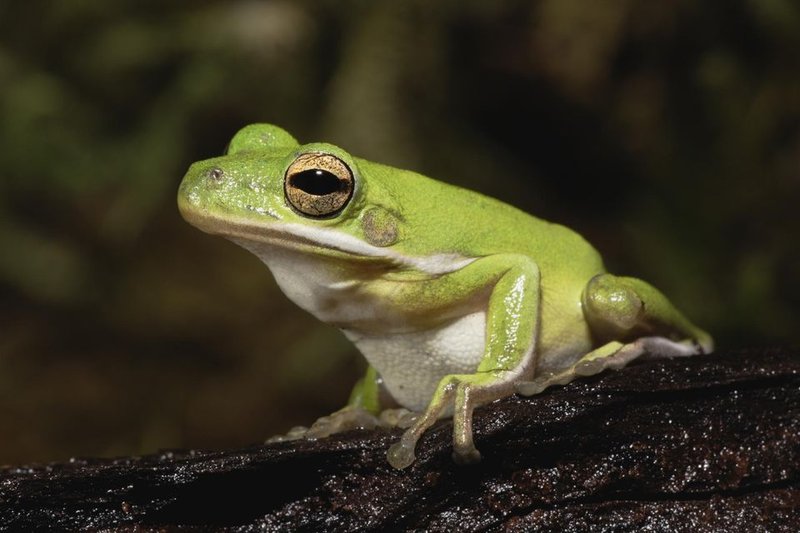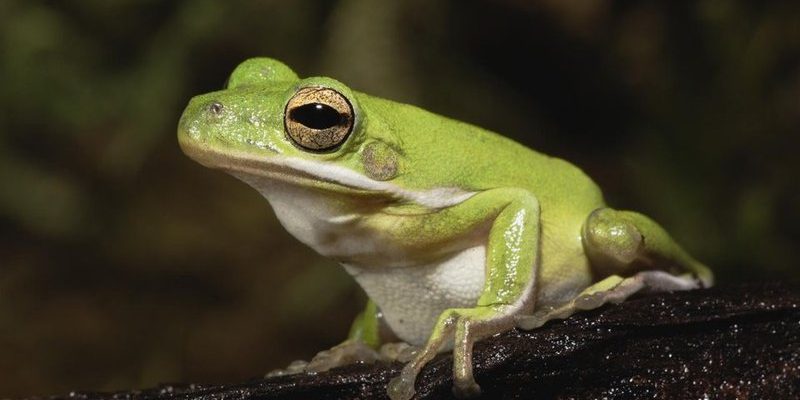
The American Green Tree Frog is a charming little creature that seems to leap right out of a child’s fairy tale, with its bright green color and distinctive calls. These frogs are not just pretty; they play a vital role in their ecosystems. Imagine hopping through a wetland or your backyard, and suddenly you hear a sweet, chirping sound—then you spot a vibrant green tree frog perched on a leaf. This is their world, and it’s filled with fascinating behaviors and characteristics.
As we explore the American Green Tree Frog, you’ll discover everything from its habitat and diet to some of its challenges in the wild. Whether you’re an aspiring herpetologist, a nature enthusiast, or someone who just thinks frogs are cool, there’s plenty to learn about these little green dynamos. So, let’s dive in!
Physical Characteristics
The American Green Tree Frog (Hyla cinerea) is easily recognizable due to its stunning coloration and size. Typically, they measure about 2 to 3 inches in length, which is roughly the size of a standard pen. Their bright green skin helps them blend into lush vegetation, providing excellent camouflage from predators. This color can vary slightly based on environmental factors, so some may look yellowish-green or even have darker markings.
One striking feature is their large, round eyes that are usually golden in color. These big eyes not only add to their cuteness but also enable them to see well in low light. Another unique trait is their slender body and long limbs, which are perfect for climbing. With their sticky toe pads, they can easily grip onto branches and leaves, making them quite adept little climbers.
In their natural habitat, these frogs are often seen in trees, shrubs, or other high locations near water sources. Their skin is smooth and moisture-retaining, which is crucial for their survival in humid environments. However, it’s also sensitive, requiring them to stay away from pollution and harsh chemicals, making their habitat preservation vital.
Habitat and Distribution
American Green Tree Frogs are primarily found in the southeastern United States, ranging from Florida to North Carolina and as far west as Texas. They thrive in a variety of wetland environments, including swamps, marshes, and ponds. These frogs are often found near areas with abundant vegetation where they can hide and hunt for food.
You might be wondering why wetlands are so important for these frogs. Wetlands provide not only a breeding ground but also a rich source of food. Here, you’ll find insects, worms, and other small invertebrates that make up the majority of their diet. The lush plant life offers shelter from predators, and the water allows them to stay moist—a crucial aspect of their survival.
However, like many amphibians, the American Green Tree Frog faces threats from habitat destruction, climate change, and pollution. As wetlands are drained for development or agriculture, these frogs lose their homes. It’s a sobering reminder of how interconnected our ecosystems are and why protecting these environments is essential.
Behavior and Diet
The American Green Tree Frog is primarily nocturnal, meaning they are most active during the night. As dusk falls, you might hear their distinctive calls echoing through the wetlands. Males are known for their loud, rhythmic croaks, used to attract females during breeding season. Imagine a chorus of cheerful sounds filling the air—it’s a beautiful serenade of nature!
When it comes to diet, these frogs are insectivores. Their meals consist mainly of a variety of insects such as crickets, moths, and flies. They use their long, sticky tongues to catch their prey, snapping it up with surprising speed. This hunting style is not just effective; it also showcases their agile and quick reflexes, skills honed over years of evolution.
Interestingly, their diet can vary by season and availability of food. During warmer months, when insects are plentiful, these frogs may be seen feasting more frequently. Conversely, in the cooler months, their metabolism slows down, and they may enter a state of dormancy until warmer weather returns. This remarkable adaptation enables them to survive when food becomes scarce.
Reproduction and Life Cycle
The breeding season for the American Green Tree Frog typically occurs in late spring to early summer. During this time, the males establish territories and call out to attract females. It’s a bit like a dating game in nature; the loudest and most attractive calls often win the day! Females will listen for the calls and choose their mates based on the quality and frequency of the sounds.
After mating, the female lays her eggs in shallow water, usually attached to vegetation to prevent them from drifting away. A single female can lay hundreds of eggs, which hatch into tadpoles within a few days. These tadpoles are usually dark in color and have a distinct, elongated shape. They spend several weeks developing in the water before transforming into frogs.
The metamorphosis is quite fascinating; as tadpoles grow, they develop legs, their tails shrink, and they start to breathe air instead of taking oxygen from the water. Once they are fully transformed, they leave the water and begin their new life on land. This life cycle is a remarkable transition, showcasing the incredible adaptability of amphibians in varied environments.
Conservation Status
The American Green Tree Frog is currently listed as a species of least concern according to the International Union for Conservation of Nature (IUCN), but that doesn’t mean they’re out of the woods. Like many amphibians, they are sensitive indicators of environmental health, and their populations can decline rapidly due to pollution and habitat loss. Protecting their habitats is essential for ensuring their survival.
Initiatives to protect wetlands and restore ecosystems are vital. Organizations work to raise awareness, advocate for conservation policies, and promote habitat restoration projects. These efforts help create a better environment not just for the American Green Tree Frog but for countless other species that share their wetlands.
Education plays a crucial role in conservation, too. By spreading knowledge about the importance of these frogs and their habitats, we can inspire more people to get involved in preserving our natural world. So, the next time you hear a frog croak on a warm evening, remember it’s not just a sound—it’s a call for help for these fascinating creatures.
| Characteristic | Details |
|---|---|
| Scientific Name | Hyla cinerea |
| Size | 2 to 3 inches (5 to 7.5 cm) |
| Color | Bright green with possible yellowish hue |
| Habitat | Wetlands, swamps, and ponds |
| Diet | Insects, including crickets and moths |
| Lifespan | 3 to 5 years in the wild |
| Breeding Season | Late spring to early summer |
Interesting Facts
The American Green Tree Frog has a few quirky traits that make it even more interesting. For instance, did you know that they can change color slightly based on their mood and environment? This ability to shift hues gives them an edge in hiding from predators and can also reflect their health status. A healthy green frog is generally a good sign!
Another fun fact is that these frogs aren’t just great climbers; they’re also proficient swimmers. If threatened, they may dive into the water to escape danger. This duality of movement allows them to thrive in their environments, whether perched on a leafy branch or gliding through a pond.
Lastly, their distinct croaks can vary in pitch and tone, depending on where they are located. Some researchers even suggest that the calls might have regional accents, much like humans do. So next time you hear a frog calling, take a moment to appreciate the uniqueness of its voice!
FAQ
What do American Green Tree Frogs eat?
American Green Tree Frogs primarily feast on insects, including crickets, moths, and various small invertebrates. They have a unique hunting style, using their long, sticky tongues to catch their prey. This makes them effective at snagging fast-moving insects in their environment.
Where can I find American Green Tree Frogs?
You can typically find American Green Tree Frogs in the southeastern United States, particularly in wetland areas like swamps, marshes, and ponds. They often seek shelter in bushes, trees, and other foliage near water sources.
How do American Green Tree Frogs communicate?
These frogs are known for their loud, distinct calls, especially during the breeding season. Males croak to attract females, and the calls can be heard from quite a distance. It’s their way of announcing their presence and claiming territory.
What threats do American Green Tree Frogs face in the wild?
American Green Tree Frogs face several threats, including habitat destruction, pollution, and climate change. As wetlands are drained for development or agriculture, their natural habitats diminish, putting their populations at risk.
How long do American Green Tree Frogs live?
In the wild, American Green Tree Frogs generally have a lifespan of around 3 to 5 years. However, this can vary depending on environmental conditions and threats they may face during their lives.
Can American Green Tree Frogs change color?
Yes, American Green Tree Frogs can change color slightly based on their mood, health, and environmental conditions. This ability helps them blend in with their surroundings, providing excellent camouflage from predators.
Are American Green Tree Frogs good pets?
While American Green Tree Frogs can be kept as pets, they require specific care to thrive. They need a habitat that mimics their natural environment, with adequate humidity, temperature, and plenty of vegetation. Always research thoroughly before considering one as a pet.

